Key Takeaways
- Early signs of gnats include frequent sightings, larvae in soil or drains, and plant damage.
- Gnats are attracted to moisture, organic waste, and poorly maintained drains.
- Removing breeding grounds and setting traps effectively control gnats.
- Regular cleaning, proper plant care, and home maintenance help prevent infestations.
- Persistent infestations may require professional pest control intervention.
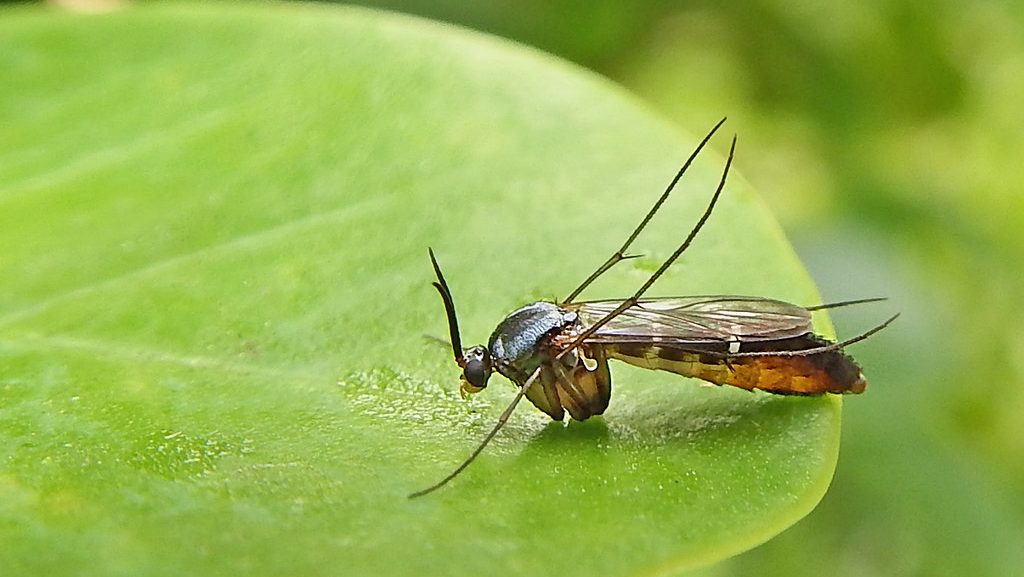 Though small and seemingly harmless, Gnats can quickly become a major pest problem in any US household. Their tiny size and rapid breeding capabilities often make early detection challenging. Now it will be helpful if you recognize the first signs of a gnat infestation which can help you manage the issue easily and effectively, preventing a minor inconvenience from escalating into a major nuisance.
Though small and seemingly harmless, Gnats can quickly become a major pest problem in any US household. Their tiny size and rapid breeding capabilities often make early detection challenging. Now it will be helpful if you recognize the first signs of a gnat infestation which can help you manage the issue easily and effectively, preventing a minor inconvenience from escalating into a major nuisance.
In this complete guide, we’ll explore how to pinpoint gnats, typical signs of infestation, what attracts them to your home, and effective strategies to control and prevent future problems.
Understanding Gnats: Small but Troublesome
- Gnats are tiny flying insects which are often mistaken for fruit flies or mosquitoes. While they might look similar, each species exhibits distinct behaviors and habitats. Commonly encountered gnats in US homes include fungus gnats, fruit flies, and drain gnats.
-
Fungus Gnats: Typically found hovering around houseplants and moist soil, these gnats thrive in damp potting mix and organic matter.
-
Fruit Flies: Attracted to ripe or fermenting fruits and vegetables, they are commonly seen around kitchen counters and trash bins.
-
Drain Gnats: Also known as drain flies, they breed in damp, organic-rich environments such as kitchen and bathroom drains, where stagnant water and debris accumulate.
Understanding these differences can help in accurately identifying and controlling the infestation.
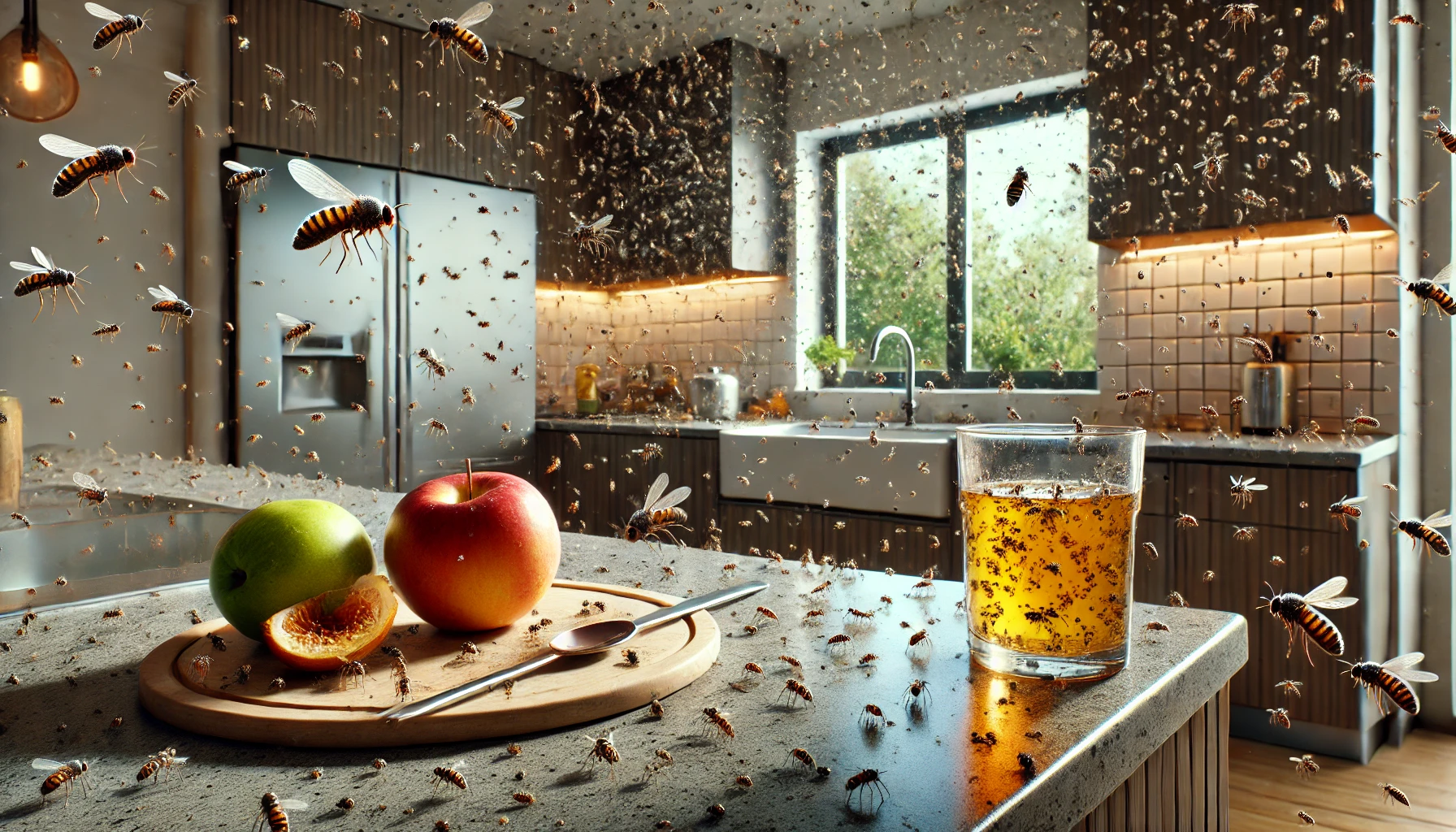

Not getting a solution?
Get your free pest control estimate today!Common Signs of a Gnat Infestation
Spotting gnats flying around your home is just the beginning. To effectively address an infestation, you should recognize multiple signs:Frequent Sightings of Gnats
- The most obvious indicator is seeing adult gnats regularly around your home. Different species prefer specific areas:
-
Fruit Flies: Typically seen in kitchens around ripe produce, garbage bins, or compost areas.
-
Drain Gnats: Commonly found in bathrooms and kitchens near sinks, showers, or drains, where moisture and organic buildup provide breeding grounds.
-
Fungus Gnats: Usually hover near houseplants and damp potting soil, thriving in moist environments.
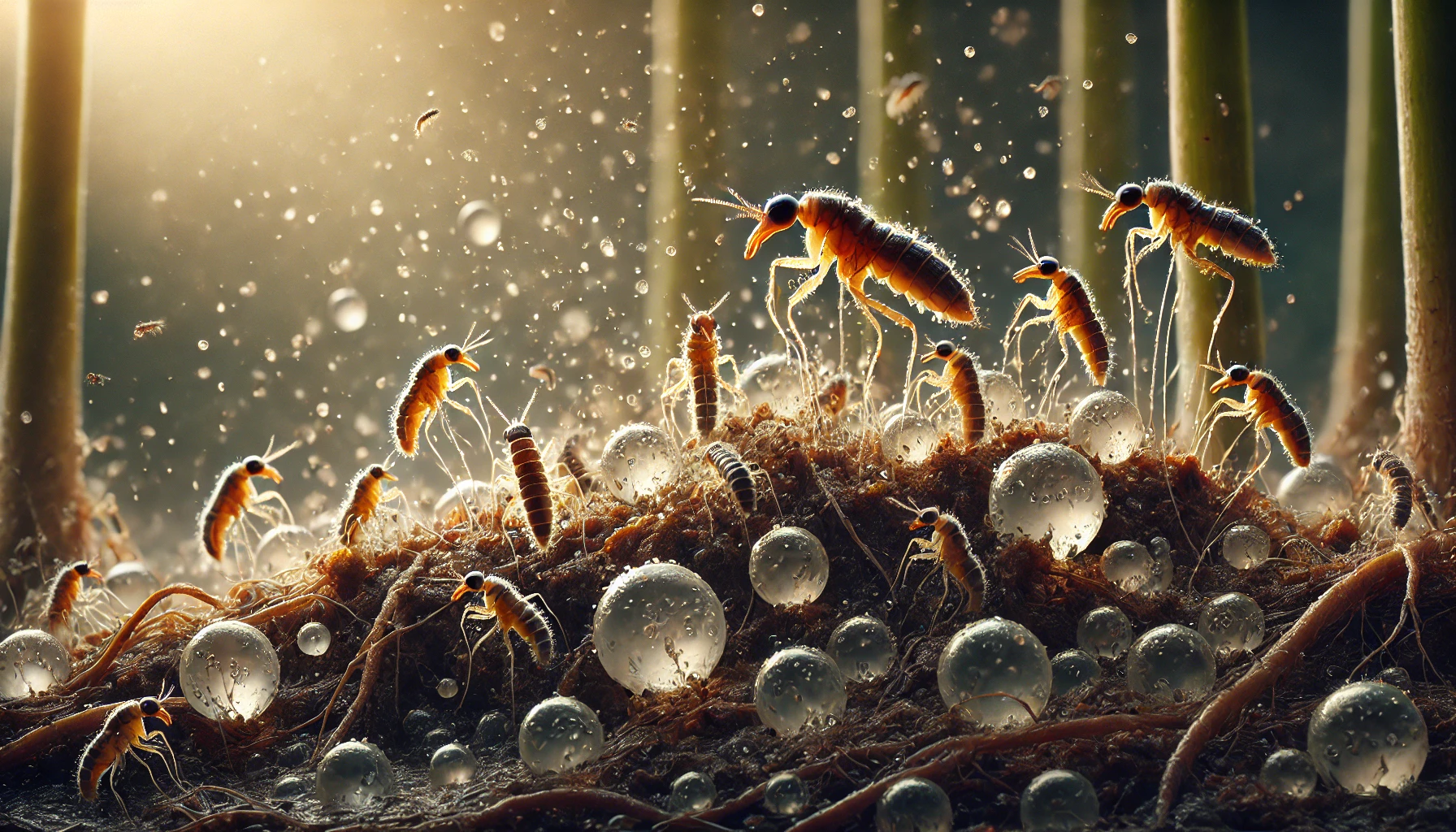
Larvae and Eggs in Soil or Drains
- Gnat larvae and eggs indicate active breeding sites:
-
Soil: Fungus gnat larvae resemble tiny, transparent worms found near the surface of moist soil in plant pots, indicating active breeding.
-
Drains: Drain gnat larvae thrive in the organic residue found in pipes and appear as slender, worm-like creatures, often seen in bathroom and kitchen drains.
- Droop plants despite of proper watering.
- Yellowing or browning of leaves.
- Sluggish growth or poor flowering due to larvae feeding on roots.
 4. Gnats Around Light Sources
Gnats are highly attracted to light, which is mainly during dusk and evening hours. If you see clusters around lamps, TVs, computer screens, or windows, it usually shows that there is a larger infestation nearby.
5. Bites and Skin Irritation
While most indoor gnats do not bite, some outdoor varieties—such as biting midges or “no-see-ums”—can enter homes and bite, causing itchy red bumps. Frequent unexplained bites indoors might indicate an infestation stemming from outside sources.
4. Gnats Around Light Sources
Gnats are highly attracted to light, which is mainly during dusk and evening hours. If you see clusters around lamps, TVs, computer screens, or windows, it usually shows that there is a larger infestation nearby.
5. Bites and Skin Irritation
While most indoor gnats do not bite, some outdoor varieties—such as biting midges or “no-see-ums”—can enter homes and bite, causing itchy red bumps. Frequent unexplained bites indoors might indicate an infestation stemming from outside sources.
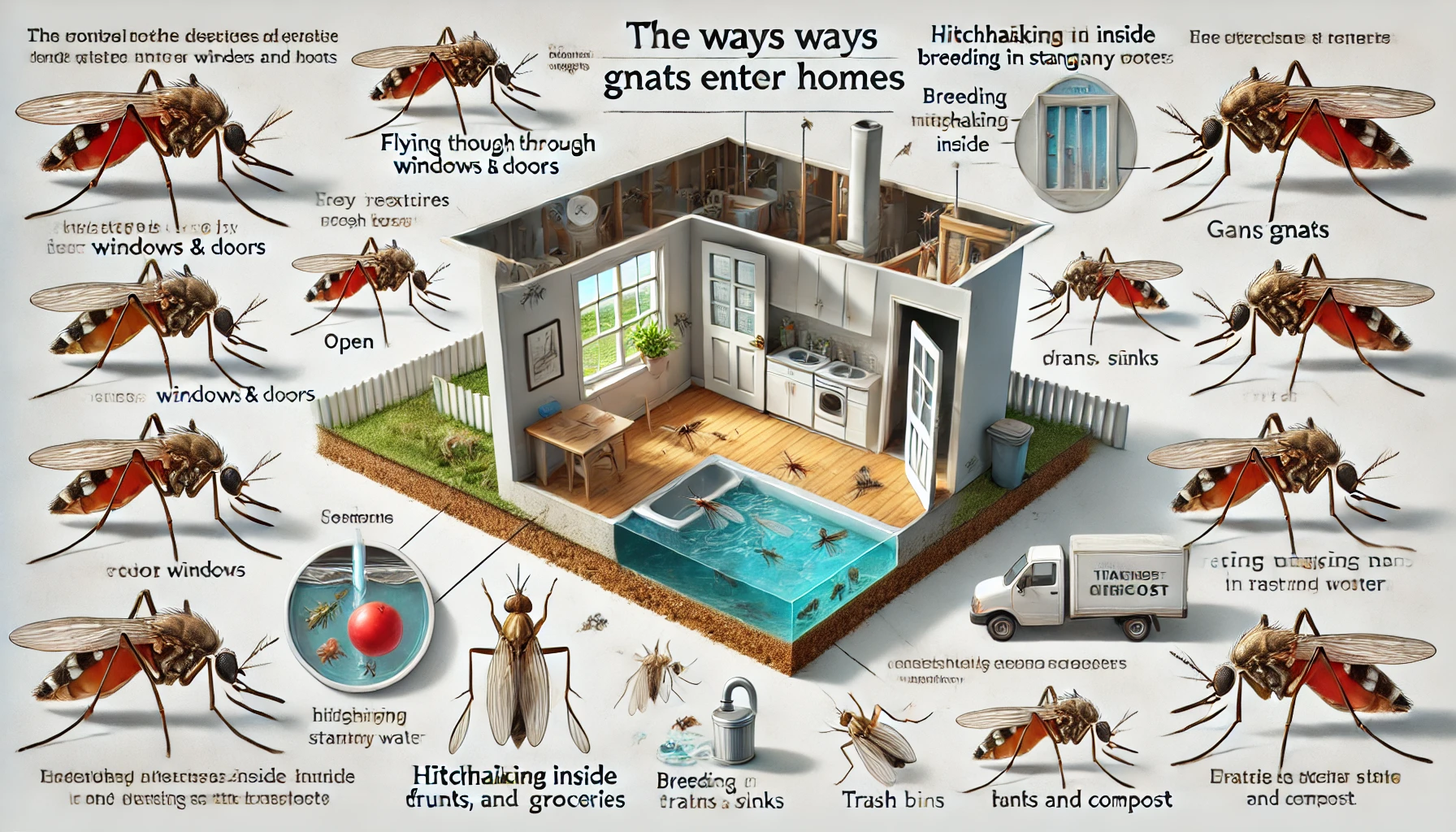
Common Causes of Gnat Infestations
Knowing what attracts gnats to your home is critical in managing and preventing infestations: Moisture and Organic Material Gnats thrive in moist environments with decaying organic matter. Common household attractants include:- Overripe fruits and vegetables.
- Open or uncovered garbage bins containing food waste.
- Damp, neglected dishcloths or sponges.
Strategies for Handling Gnat Infestations
Gnat infestations demands removing breeding grounds and choosing both adults and larvae.Step 1: Identify and Remove Breeding Sites
-
Standing Water: Remove surplus moisture around sinks, tubs, and plants to prevent gnats from laying eggs in damp environments.
-
Organic Waste: Dispose of spoiled fruits, vegetables, and garbage regularly to eliminate food sources that attract gnats.
-
Houseplants: Repot plants with fresh, sterile soil to eliminate fungus gnat larvae and prevent further infestations.
Step 2: Set Effective Traps
- Traps have been seen as notably reducing adult gnat populations:
-
Apple Cider Vinegar Trap: Place apple cider vinegar in a bowl, cover it with plastic wrap, and poke small holes to lure and trap gnats.
-
Sticky Traps: Bright yellow sticky cards placed near houseplants or kitchen areas efficiently capture flying gnats and help reduce their population.
Step 3: Regular Drain Maintenance
- Flush drains weekly with hot water or a baking soda and vinegar solution to reduce organic buildup.
- Use enzymatic cleaners monthly for long-term drain cleanliness.
Step 5: Shut Entry Points
- Inspect and seal gaps around windows, doors, and screens.
- Repair or replace damaged screens to prevent gnats from entering.
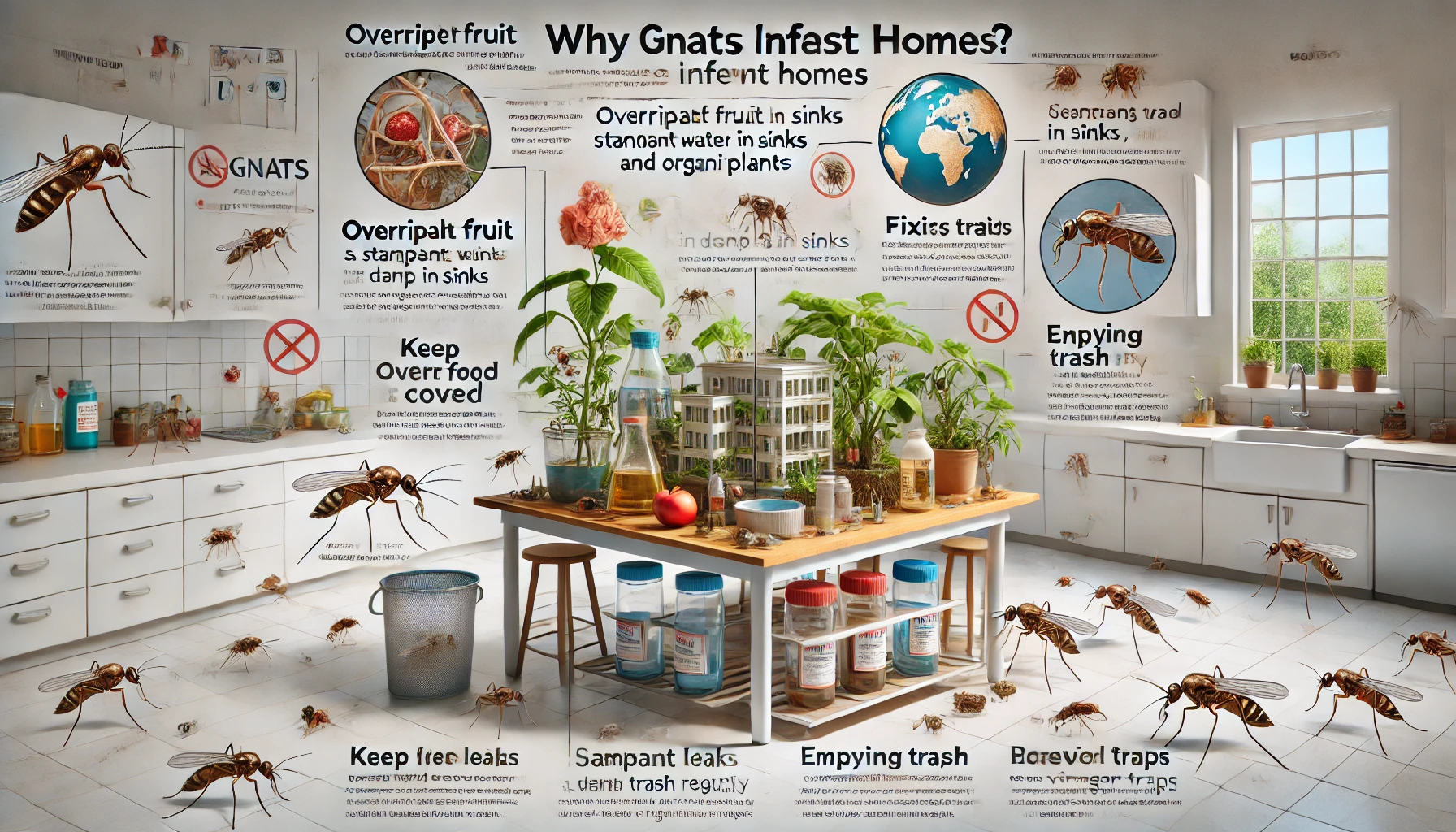
Preventing Future Gnat Infestations
- To Prevent Gnat infestations in the future, long-term prevention includes consistent and quality measures:
-
Regular Cleaning: Keep kitchens and bathrooms dry and clean to eliminate moisture and food sources that attract gnats.
-
Controlled Watering: Ensure houseplants have proper drainage and avoid overwatering to prevent fungus gnat infestations.
-
Routine Inspections: Regularly check and seal potential entry points to stop gnats from gaining access to your home.
 Executing these above practices helps to keep gnats at bay and maintains a quality and highly pest-free home.
Executing these above practices helps to keep gnats at bay and maintains a quality and highly pest-free home.
If you feel things have gone out of control, it is advised to contact pest control professionals. Our team can provide a customized approach to protect your home effectively.
Visit our Species, Control, and DIY Guide sections for additional resources on gnat and ways to tackle a gnat infestation.





